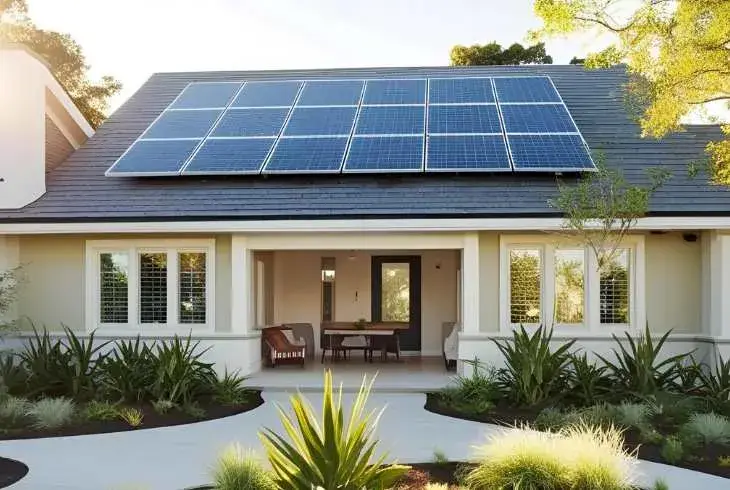Energy Efficient Lighting Guide to Save Money in 2025
Last Updated: Apr 22, 2025
What Is Energy Efficient Lighting and Why Does It Matter?

Energy efficient lighting uses less electricity to produce the same brightness as traditional bulbs helping you cut costs and carbon emissions.
Old incandescent bulbs convert up to 90% of their energy into heat. Modern alternatives like LEDs and CFLs are designed to use less power while delivering better performance.
- Lower energy bills - save up to 50% or more on lighting costs.
- Longer bulb life - fewer replacements and less waste.
- Environmental impact - reduce your carbon footprint.
- Better light quality - with more color options and control.
Types of Energy Efficient Light Bulbs (And Which One to Choose)

LED Bulbs: Most efficient and long lasting. Use up to 80% less energy and last over 15,000 hours.
CFL Bulbs: Cheaper than LEDs, but contain mercury and don't last as long.
Halogen Incandescents: Slightly more efficient than traditional bulbs, but still inferior to LEDs and CFLs.
Best pick in 2025: LEDs offer superior efficiency, durability, and control.
LEDs are the most efficient and widely recommended lighting option today, while incandescent bulbs are outdated and wasteful by comparison. If you want a detailed comparison, check out our full guide on LED vs Incandescent.
Energy Efficient Lighting for Homes

- Kitchen: Cool white LEDs for ceiling and task lighting
- Bathroom: Damp-rated LEDs with daylight tones
- Bedroom: Warm, dimmable bulbs for relaxation
- Living Room: Layered lighting using floor lamps and ambient fixtures
For smart upgrades, explore our Smart Home Technology Guide.
Energy Efficient Lighting for Businesses and Offices

- Replace fluorescents with LED panels or tubes
- Use occupancy sensors to avoid lighting empty rooms
- Integrate daylight sensors for smart adjustment
- Zone control to reduce over-lighting
Get rebates and recover costs in just a few years.
How to Read Lighting Labels and ENERGY STAR Ratings

- Lumens: Measures brightness
- Watts: Measures energy consumption
- Kelvins (K): Color temperature (2700K = warm, 5000K = daylight)
- CRI: Color rendering index - aim for 80+
- ENERGY STAR: Look for certified efficient products
Avoid buzzwords check for certifications.
Cost Savings and Return on Investment (ROI)

Replacing 20 bulbs can save you over $200 per year.
Businesses can recover investments in 1-3 years.
Check your utility provider for rebates and tax incentives.
Installation and Maintenance Tips for Long Term Efficiency

- Use LED compatible dimmers
- Keep fixtures clean and dust free
- Recycle old CFLs responsibly
- Replace all bulbs in one go for consistency
Smart Lighting and Automation for Extra Efficiency

- Control with voice or phone (Alexa, Google Assistant)
- Schedule lights to turn off when not in use
- Create scenes for activities like work or bedtime
- Remote control for away from home management
Top brands: Philips Hue, TP-Link Kasa, LIFX, Wyze, Nanoleaf
Explore more in our Smart Energy Monitoring Guide.
Common Mistakes to Avoid When Upgrading to Efficient Lighting
- Over lighting rooms unnecessarily
- Using incompatible dimmers
- Mixing color temperatures
- Buying low quality bulbs that burn out early
- Skipping motion sensors and smart controls
Conclusion: Let Your Lighting Do More with Less
Energy efficient lighting is one of the smartest upgrades you can make. It's low cost, high-impact, and delivers immediate savings.
Choose the right bulbs, use smart tech, and avoid common mistakes, and you'll enjoy brighter spaces, lower bills, and a greener home or business.
Start today. One bulb at a time.





